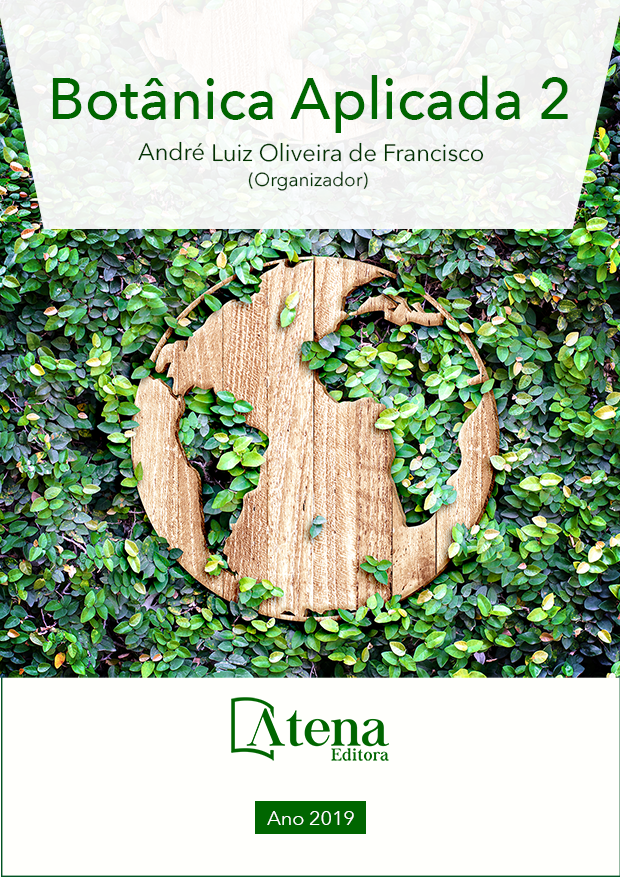
REGENERAÇÃO NATURAL LENHOSA E COBERTURA DO SOLO EM DUAS VEREDAS NO TRIÂNGULO MINEIRO, MG
As veredas são ecossistemas
heterogêneos quanto às condições ambientais,
além de sensíveis a impactos ambientais diretos
e indiretos. Este trabalho teve como objetivo
investigar padrões ecológicos da regeneração
lenhosa e a representatividade da cobertura dos
diferentes grupos vegetais em duas veredas no
Triângulo Mineiro, Minas Gerais. Regenerantes
lenhosos foram amostrados em 15 parcelas ao
longo de transectos perpendiculares à linha de
drenagem em cada vereda. A cobertura do solo
foi medida pelo método do intercepto linear nas
parcelas. Foram amostrados 369 indivíduos
regenerantes lenhosos na vereda 1 e 1.053
na vereda 2. Apesar da diferença significativa
na densidade, a diversidade de regenerantes
foi semelhante nas duas áreas. As famílias
mais representativas foram: Melastomataceae,
Asteraceae e Myrtaceae na vereda 1 e
Melastomataceae, Myrtaceae e Fabaceae
na vereda 2. Além da baixa diversidade, a
regeneração lenhosa das veredas foi dominada
por um número reduzido de espécies como
Leandra erostrata (DC.) Cogn. e a espécie
exótica Pinus caribaea Morelet. Apenas a
vereda 1 apresentou tendências de zonação
na cobertura do solo e composição da
regeneração. Com a presença de espécies
mais sensíveis a condições de perturbação
como Miconia theizans (Bonpl.) Cogn. e mais
resistentes como Trembleya parviflora (D.Don)
Cogn., as veredas parecem abrigar diferentes
condições de degradação ambiental. Enquanto
a vereda 1 apresentou indícios de perturbações
mais intensificados nas bordas, a vereda 2,
com suas margens protegidas por vegetação
nativa, apresentou alta densidade de espécies
lenhosas, algumas típicas de fitofisionomias
florestais, podendo indicar a ação de impacto
difuso.
REGENERAÇÃO NATURAL LENHOSA E COBERTURA DO SOLO EM DUAS VEREDAS NO TRIÂNGULO MINEIRO, MG
-
Palavras-chave: Áreas úmidas, Heterogeneidade ambiental, Ecologia de comunidades, Espécies invasoras.
-
Keywords: Wet lands, Environmental heterogeneity , Community ecology, Alien species.
-
Abstract:
Veredas are heterogeneous ecosystems regarding environmental
conditions, in addition to being highly sensitive to direct and indirect environmental
disturbs. In this work we aimed to investigate ecological patterns of woody regeneration
and coverage representativeness of the distinct plant groups in two veredas sites
in Triângulo Mineiro, Minas Gerais. We sampled woody regenerating individuals in
15 plots along transects perpendicular to the drainage line in each vereda sites. We
measured the soil cover by the linear intercept method in the plots. 369 regenerating
woody individuals were sampled in lane 1 and 1,053 in lane 2. Despite the significant
difference in density, the diversity of regenerants was similar in both areas. We
sampled 369 regenerating woody individuals in lane 1 and 1,053 in lane 2. Despite the
significant difference in density, the diversity of regenerants was similar in both areas.
The most representative families were: Melastomataceae, Asteraceae and Myrtaceae
in lane 1 and Melastomataceae, Myrtaceae and Fabaceae in path 2. In addition to the
low diversity, the woody regeneration in the veredas areas was dominated by a small
number of species such as Leandra erostrata (DC.) Cogn. and the alien species Pinus
caribaea Morelet. Only lane 1 presented zoning trends in soil cover and regeneration
composition. With the presence of species more sensitive to disturbing conditions such
as Miconia theizans (Bonpl.) Cogn. and more resistant like Trembleya parviflora (D.Don)
Cogn., the two vereda areas seem to harbor different conditions of environmental
degradation. While area 1 showed signs of more intense disturbance at the edges,
area 2, with its margins protected by native vegetation, showed high density of woody
species, some of them typical of forest phytophysiognomies, and could indicate the
action of diffuse disturbance.
-
Número de páginas: 15
- DanúbiaMagalhães Soares


